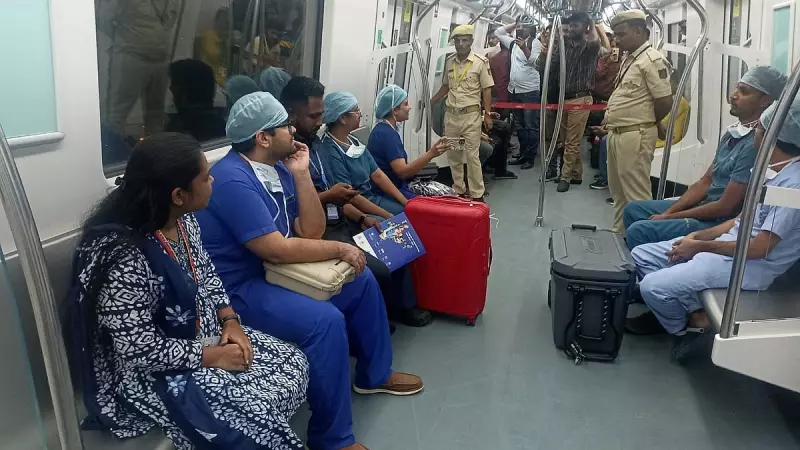
In a remarkable demonstration of civic efficiency and medical urgency, Bengaluru's metro system has successfully facilitated its fifth organ transport since August 2024, creating yet another life-saving green corridor through the city's bustling infrastructure.
Critical Heart Transport Through Metro Rails
The latest medical emergency saw Namma Metro transforming into a rapid transit system for a human heart, carrying the precious organ from Manipal Hospital to BGS Global Hospital in record time. This marks the fifth instance since August where the metro system has been utilized for organ transportation, showcasing Bengaluru's innovative approach to tackling medical emergencies.
The heart was transported via the Green Line between Nagasandra and Silk Institute stations, covering critical distance through the city's underground passages. The entire operation was meticulously coordinated between medical teams and Bangalore Metro Rail Corporation Limited (BMRCL) officials to ensure zero delays in the life-saving mission.
Growing Track Record of Medical Emergencies
Since August 2024, Bengaluru Metro has established itself as a reliable partner in medical emergencies, with this being the fifth successful organ transport through its network. The previous transports have included various vital organs that required urgent movement between medical facilities across the city.
What makes this achievement particularly significant is the consistent success rate and growing institutional expertise in handling such sensitive medical cargo. Each transport requires precise coordination, timing, and security measures to ensure the organ reaches its destination in optimal condition for transplantation.
How the Green Corridor Works
The creation of a green corridor through the metro system involves multiple layers of coordination and planning. Medical teams first coordinate with BMRCL officials, who then create a clear pathway through the metro system. Security personnel are deployed to ensure smooth passage, and metro schedules are adjusted if necessary to prioritize the medical transport.
This system has proven particularly effective in navigating Bengaluru's notorious traffic congestion, which often poses significant challenges for conventional ambulance transport. By utilizing the metro's dedicated rail system, medical teams can bypass road traffic entirely, saving precious minutes that can make the difference between life and death for transplant recipients.
The success of these operations has positioned Bengaluru Metro as a model for other Indian cities looking to optimize their public transport systems for emergency medical services. As the frequency of such transports increases, the systems and protocols continue to be refined, making each subsequent operation more efficient than the last.
This innovative use of public infrastructure represents a significant advancement in emergency medical logistics and demonstrates how urban transport systems can serve multiple purposes beyond conventional commuting.





